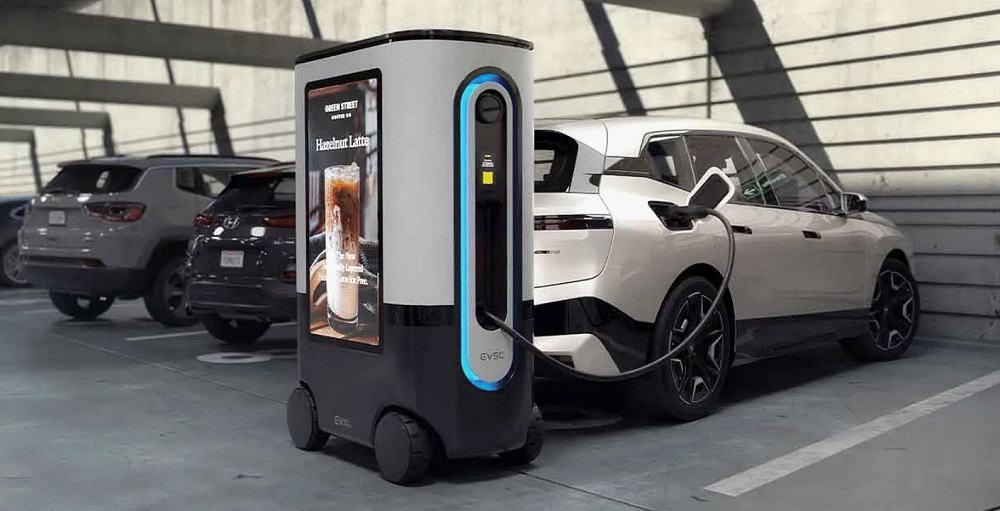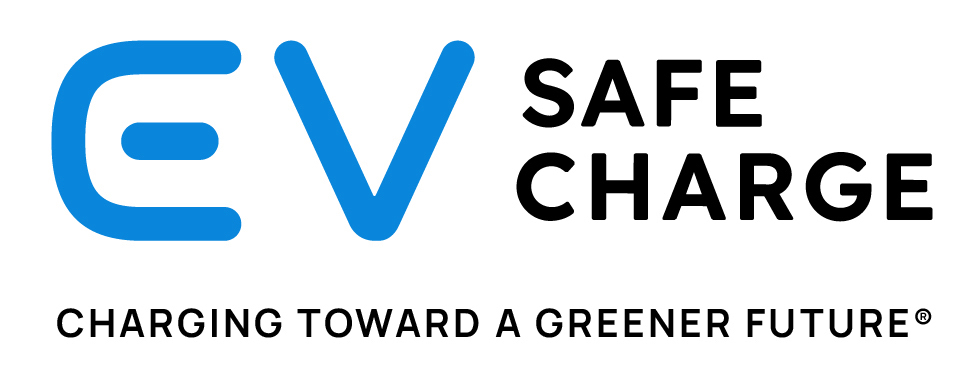EV Charging Stations Go Mobile
Startup EV Safe Charge is addressing rcharging anxiety with a robotic charging station. 
By Rebecca Day
What’s at stake?
Carmakers are investing big sums in EVs, but charging anxiety has many U.S. consumers hesitant to buy in. Could a charger robot be a solution.
By 2025, electric vehicles (EVs) will represent 23 percent of new passenger-vehicle sales globally, up from just under 10 percent in 2021, according to a 2022 BloombergNEF outlook. Sales of plug-in vehicles will rise from 6.6 million last year to 20.6 million by mid-decade.
Most of those sales, 80 percent, will come from China and Europe, Bloomberg says. Though the U.S. EV market is expected to pick up steam beginning in 2023, it will account for only 15 percent of the global EV market two years later due to consumer reticence.
Americans’ resistance to plug-in vehicles owes largely to charging anxiety, Caradoc Ehrenhalt, CEO of EV Safe Charge told the Ojo-Yoshida Report. Ehrenhalt is on a mission to change that.
When Ehrenhalt bought his first EV, he knew it was the future of driving, but after having a charger installed at home, “I realized people needed help.” So he founded EV Safe Charge to install fixed EV chargers in homes, then in commercial locations.
Now the Los Angeles-based company is taking chargers on the road. Ehrenhalt is working on a mobile option called ZiGGY that brings chargers to the people where they shop, learn and lodge. Designed for situations where a fixed EV charging solution isn’t feasible, ZiGGY is a robot on wheels, complete with onboard sensors, cameras and communications. When summoned by a smartphone using the EV Safe Charge app, ZiGGY rolls its way to a designated parking spot and fills ’er up.
Building out a fast-charging Level 2 charging infrastructure similar to all-purpose home chargers is an expensive commitment for a commercial establishment, and many older buildings can’t do it based on electrical limitations. Chargers also eat up valuable real estate in the parking lot of a shopping mall, hotel, airport or college campus. That’s where Ehrenhalt sees an opening.
ZiGGY motors itself to customers’ vehicles and charges an EV in a standard parking space. A fixed EV charging station today only serves the parking space in front of it, Ehrenhalt noted, whereas ZiGGY “drives all over the parking lot.” It just needs to go back to its home base to recharge when needed. ZiGGY will provide about 175 miles of range before going to recharge itself, and it can self-charge when not in use.
Ehrenhalt bills ZiGGY as a flexible, “simple” solution for offices, malls and apartment complexes to meet what he sees as the growing charging needs of tenants and guests “without expensive, time-consuming infrastructure and installation investment.” It does require human intervention when charging ends, either by the vehicle owner or a parking lot attendant.

The robot charger is five times more cost effective than fixed chargers, Ehrenhalt maintained. He pitches ZiGGY as an “operating expense” under the company’s leasing model vs. a fixed charger that’s a “capital expense.” Locations will lease ZiGGY by the month, and EV Safe Charge will handle maintenance and upgrades.
ZiGGY could generate its own revenue if commercial customers buy into Ehrenhalt’s concept of a roving robot billboard. While production-version ZiGGYs are still in design, the plan is for the EV charging robot to shoulder a 50-inch LCD monitor on each side for advertising. It’s sure to attract more than a few looks.
Charging fees will be determined by the parking facility, Ehrenhalt said; some may elect to make charging an amenity as a competitive feature. A typical fee range for public charging stations is a “very rare” starting rate of 15 cents per kilowatt hour (kWh) to 45 cents per kWh, he said.
Ehrenhalt expects typical charging times at a mall or office setting to be an hour, and longer at multi-unit dwellings and airports. The minimum charging time would likely be 15 minutes. Most drivers in urban settings drive 30 miles a day or less, and ZiGGY, at the planned initial Level 2 charging rate, will deliver about 30 miles of range in an hour, based on the power most cars can currently accommodate with Level 2 charging, he said.
At locations with no infrastructure available to recharge ZiGGYs, EV Safe Charge will take the robots off site for recharging. For locations that can accommodate the company’s charging bases, one home base can serve “numerous” ZiGGYs, depending on the needs of the facility, Ehrenhalt said.
EV charging regs
Ehrenhalt sees an opportunity with municipalities that are putting in regulations requiring a certain number of EV charger parking spots in relation to conventional parking spaces. Having to put in 90 charging stations in a 900-vehicle lot, or a couple of high-powered DC chargers, is “very expensive” and not possible in some cases where power isn’t available, he said.
Continued high gas prices could go far toward removing consumers’ resistance to EVs, Ehrenhalt said, who put the average cost to fill a gas-powered vehicle with a 12-gallon tank at $56.28, assuming $4.69 per gallon based on July 2022 prices. At a very friendly electricity rate of 15 cents/kWh, an EV with a 60-kWh battery would cost $9 to recharge.
First, of course, car owners have to get past the pricey buy-in for an EV. Though the Nissan Leaf starts at an affordable $28,000, U.S. News & World Report notes that EV prices “soar to well over $100,000 for an electric SUV.”
EV Safe Charge is targeting cities including Chicago, New York, Los Angeles, Cairo and London for ZiGGY, both for fixed-base solutions and the pick-up and drop-off model, Ehrenhalt said. He expects the first Ziggy robots to enter production in 2023 with delivery by year’s end or in 2024. The company is taking orders now, he said.
Bottom line:
Mobile EV charging solutions can be a convenient alternative to fixed installations, helping to build out the much-needed next-gen charging infrastructure.
Tech writer Rebecca Day is senior editor at Consumer Electronics Daily. For over 30 years, she has covered consumer tech, including audio/video, custom residential technology, smart home and personal electronics. Her articles have appeared in EE Times, Rolling Stone, The Robb Report, Popular Mechanics, Residential Tech Today and other publications.
https://ojoyoshidareport.com/ev-charging-stations-go-mobile/













